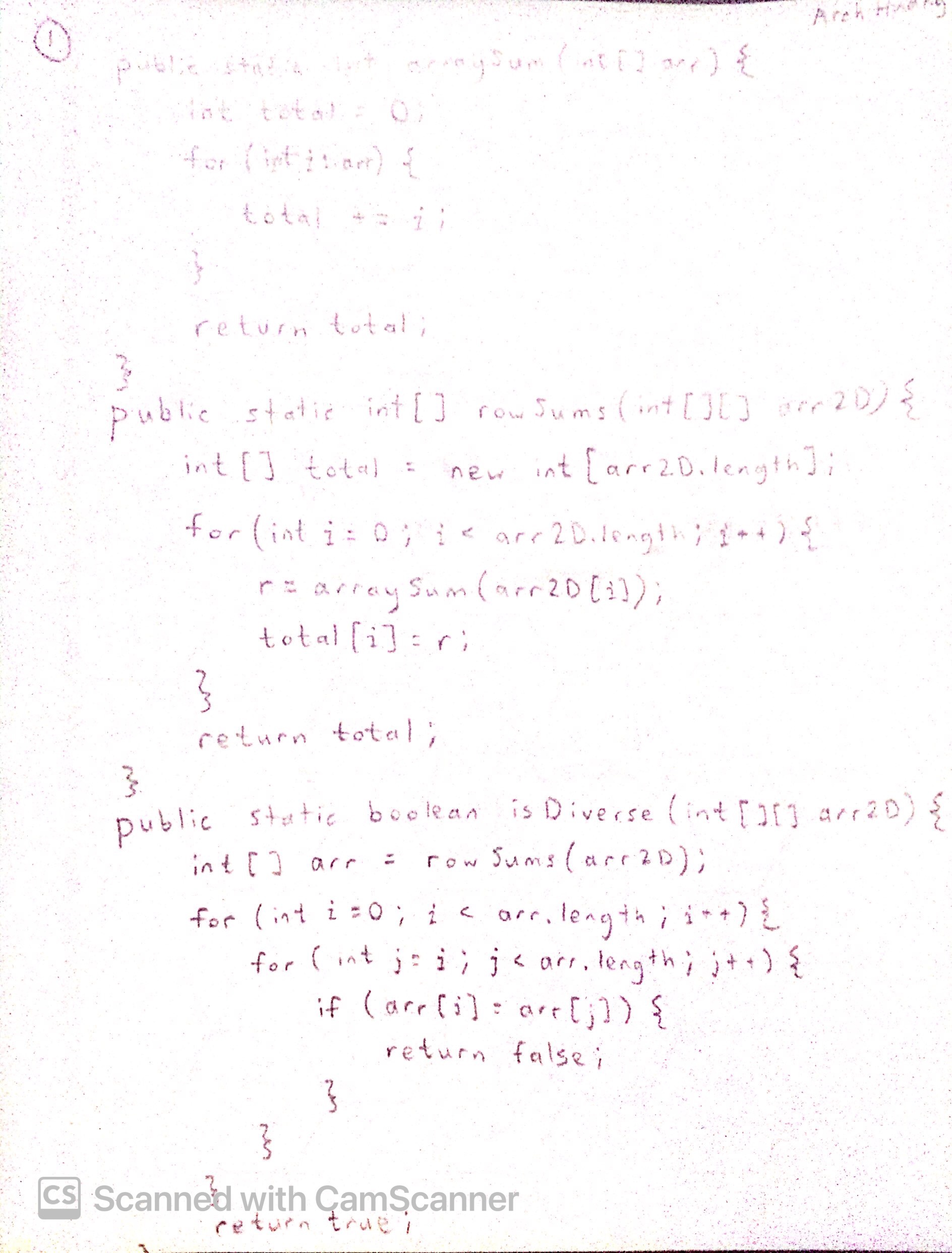CSA
| CSA | Week 0 | Week 1 | Week 2 | Week 3 | Final | Week 5 | Week 6 | Study |
|---|---|---|---|---|---|---|---|---|
| Week 7 |
Week 5 - Ticket
Plan
| Day | Things to Review |
|---|---|
| Monday |
1. Study Java syntax for for-loops.
2. Review Array and ArrayList syntax differences. 3. Increase speed for MCQs on conditional, looping, and recursive problems. 4. Practice writing code on paper (No IDE or W3 schools syntax help). 5. Watch out for super() class calls. 6. Unit 9 MCQ Question 3 is tricky. Review it over and over again, so I don't get tricked in the future. |
| Tuesday |
7. Review Truth Tables and De Morgan's Law.
8. Memorize how java default libraries like substring() work. 9. Study how java for-each loops work with arrays (2015 MCQ Question 22). 10. Be careful when the inner nested for loop sets it's starting/stopping point based on the value of the outer for loop. |
| Wednesday |
Questions Missed: None!
Questions Unanswered: 23, 26 and onwards.
Question 26: E
Question 27: B
Question 28: B
Question 29: A
Question 30: B
Question 31: E
Question 32: B
|
| Thursday |


|
| Friday |
Question 33: E
Question 34: D
Question 35: C
Question 36: D
Question 37: E
Question 38: C
Question 39: C
Question 23: C
|